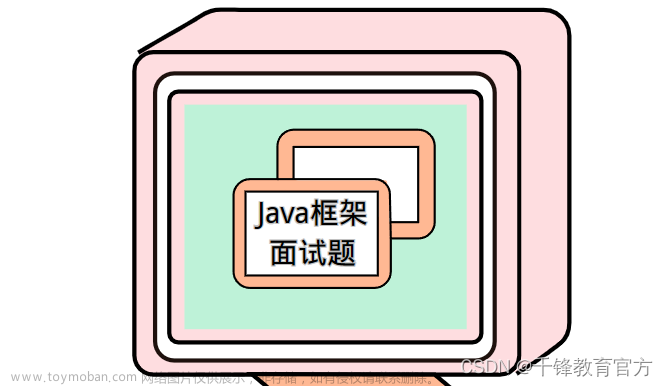spring.rabbitmq.host: 服务Host
spring.rabbitmq.port: 服务端口
spring.rabbitmq.username: 登陆用户名
spring.rabbitmq.password: 登陆密码
spring.rabbitmq.virtual-host: 连接到rabbitMQ的vhost
spring.rabbitmq.addresses: 指定client连接到的server的地址,多个以逗号分隔(优先取addresses,然后再取host)
spring.rabbitmq.requested-heartbeat: 指定心跳超时,单位秒,0为不指定;默认60s
spring.rabbitmq.publisher-confirms: 是否启用【发布确认】
spring.rabbitmq.publisher-returns: 是否启用【发布返回】
spring.rabbitmq.connection-timeout: 连接超时,单位毫秒,0表示无穷大,不超时
spring.rabbitmq.parsed-addresses:
# ssl
spring.rabbitmq.ssl.enabled: 是否支持ssl
spring.rabbitmq.ssl.key-store: 指定持有SSL certificate的key store的路径
spring.rabbitmq.ssl.key-store-password: 指定访问key store的密码
spring.rabbitmq.ssl.trust-store: 指定持有SSL certificates的Trust store
spring.rabbitmq.ssl.trust-store-password: 指定访问trust store的密码
spring.rabbitmq.ssl.algorithm: ssl使用的算法,例如,TLSv1.1
# cache
spring.rabbitmq.cache.channel.size: 缓存中保持的channel数量
spring.rabbitmq.cache.channel.checkout-timeout: 当缓存数量被设置时,从缓存中获取一个channel的超时时间,单位毫秒;如果为0,则总是创建一个新channel
spring.rabbitmq.cache.connection.size: 缓存的连接数,只有是CONNECTION模式时生效
spring.rabbitmq.cache.connection.mode: 连接工厂缓存模式:CHANNEL 和 CONNECTION
# listener
spring.rabbitmq.listener.simple.auto-startup: 是否启动时自动启动容器
spring.rabbitmq.listener.simple.acknowledge-mode: 表示消息确认方式,其有三种配置方式,分别是none、manual和auto;默认auto
spring.rabbitmq.listener.simple.concurrency: 最小的消费者数量
spring.rabbitmq.listener.simple.max-concurrency: 最大的消费者数量
spring.rabbitmq.listener.simple.prefetch: 指定一个请求能处理多少个消息,如果有事务的话,必须大于等于transaction数量.
spring.rabbitmq.listener.simple.transaction-size: 指定一个事务处理的消息数量,最好是小于等于prefetch的数量.
spring.rabbitmq.listener.simple.default-requeue-rejected: 决定被拒绝的消息是否重新入队;默认是true(与参数acknowledge-mode有关系)
spring.rabbitmq.listener.simple.idle-event-interval: 多少长时间发布空闲容器时间,单位毫秒
spring.rabbitmq.listener.simple.retry.enabled: 监听重试是否可用
spring.rabbitmq.listener.simple.retry.max-attempts: 最大重试次数
spring.rabbitmq.listener.simple.retry.initial-interval: 第一次和第二次尝试发布或传递消息之间的间隔
spring.rabbitmq.listener.simple.retry.multiplier: 应用于上一重试间隔的乘数
spring.rabbitmq.listener.simple.retry.max-interval: 最大重试时间间隔
spring.rabbitmq.listener.simple.retry.stateless: 重试是有状态or无状态
# template
spring.rabbitmq.template.mandatory: 启用强制信息;默认false
spring.rabbitmq.template.receive-timeout: receive() 操作的超时时间
spring.rabbitmq.template.reply-timeout: sendAndReceive() 操作的超时时间
spring.rabbitmq.template.retry.enabled: 发送重试是否可用
spring.rabbitmq.template.retry.max-attempts: 最大重试次数
spring.rabbitmq.template.retry.initial-interval: 第一次和第二次尝试发布或传递消息之间的间隔
spring.rabbitmq.template.retry.multiplier: 应用于上一重试间隔的乘数
spring.rabbitmq.template.retry.max-interval: 最大重试时间间隔
参考文档:
Spring Cloud中RabbitMQ配置属性表: Spring Cloud中RabbitMQ配置属性表。_spring.rabbitmq.cache.connection.size作用-CSDN博客
SpringBoot的RabbitMQ消息队列: 第二模式"Work queues" SpringBoot的RabbitMQ消息队列: 三、第二模式"Work queues"_springboot rabbitmq work queue-CSDN博客
SpringBoot官方文档:https://docs.spring.io/spring-amqp/docs/1.5.6.RELEASE/reference/html/_reference.html文章来源:https://www.toymoban.com/news/detail-820801.html
SpringBoot系统- 死信队列: https://www.cnblogs.com/bigdataZJ/p/springboot-deadletter-queue.html文章来源地址https://www.toymoban.com/news/detail-820801.html
到了这里,关于Spring Boot + RabbitMQ 配置参数解释的文章就介绍完了。如果您还想了解更多内容,请在右上角搜索TOY模板网以前的文章或继续浏览下面的相关文章,希望大家以后多多支持TOY模板网!




![[Spring boot] Spring boot 整合RabbitMQ实现通过RabbitMQ进行项目的连接](https://imgs.yssmx.com/Uploads/2024/01/820371-1.png)




